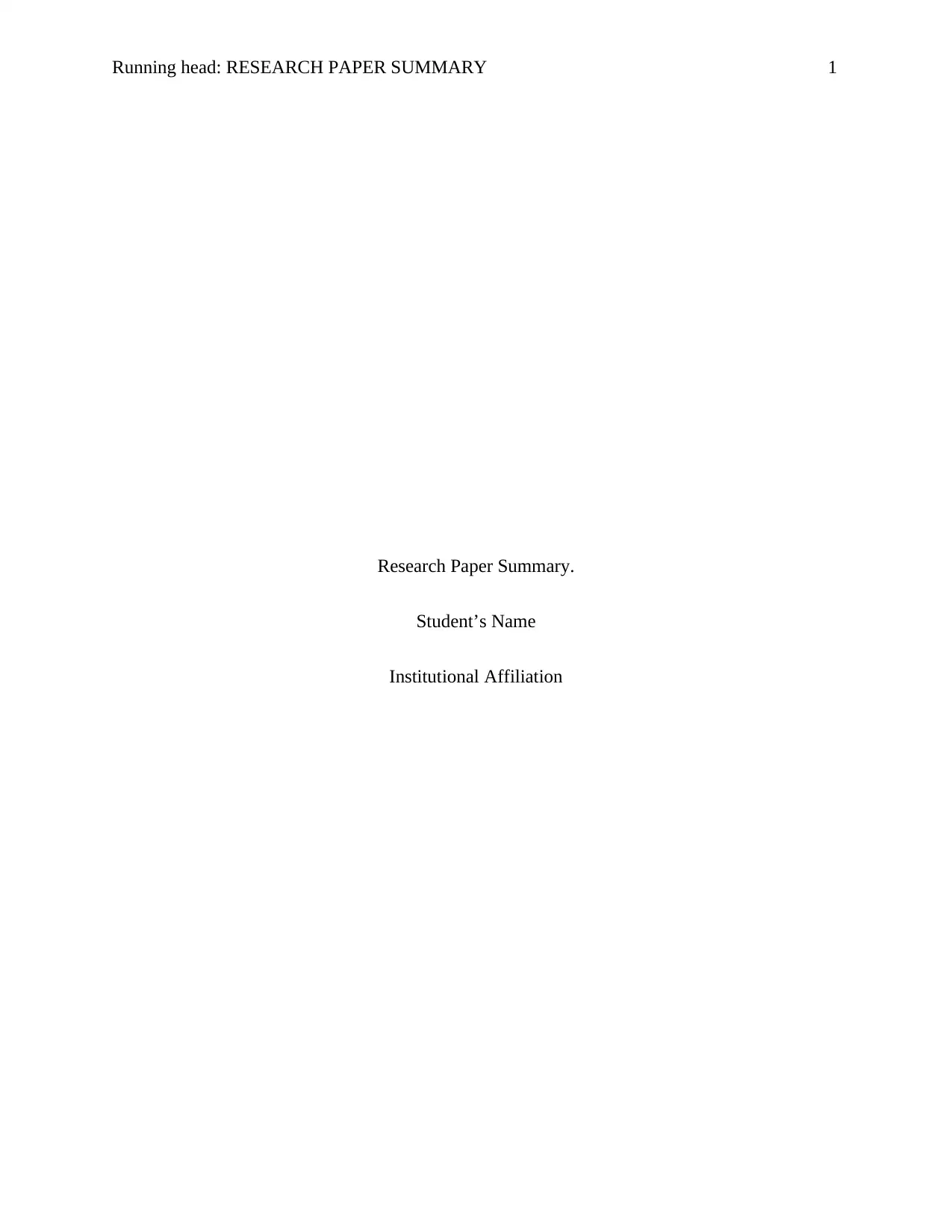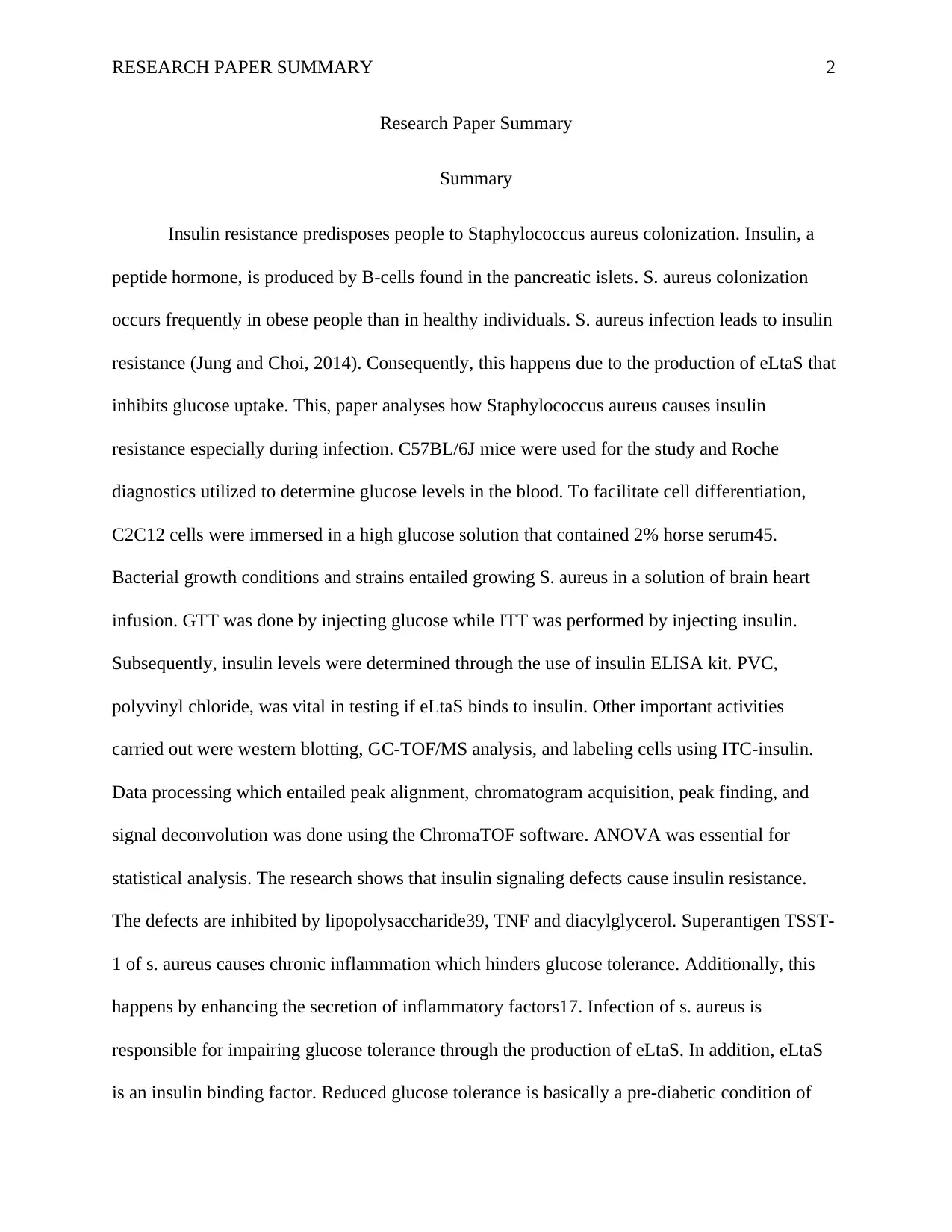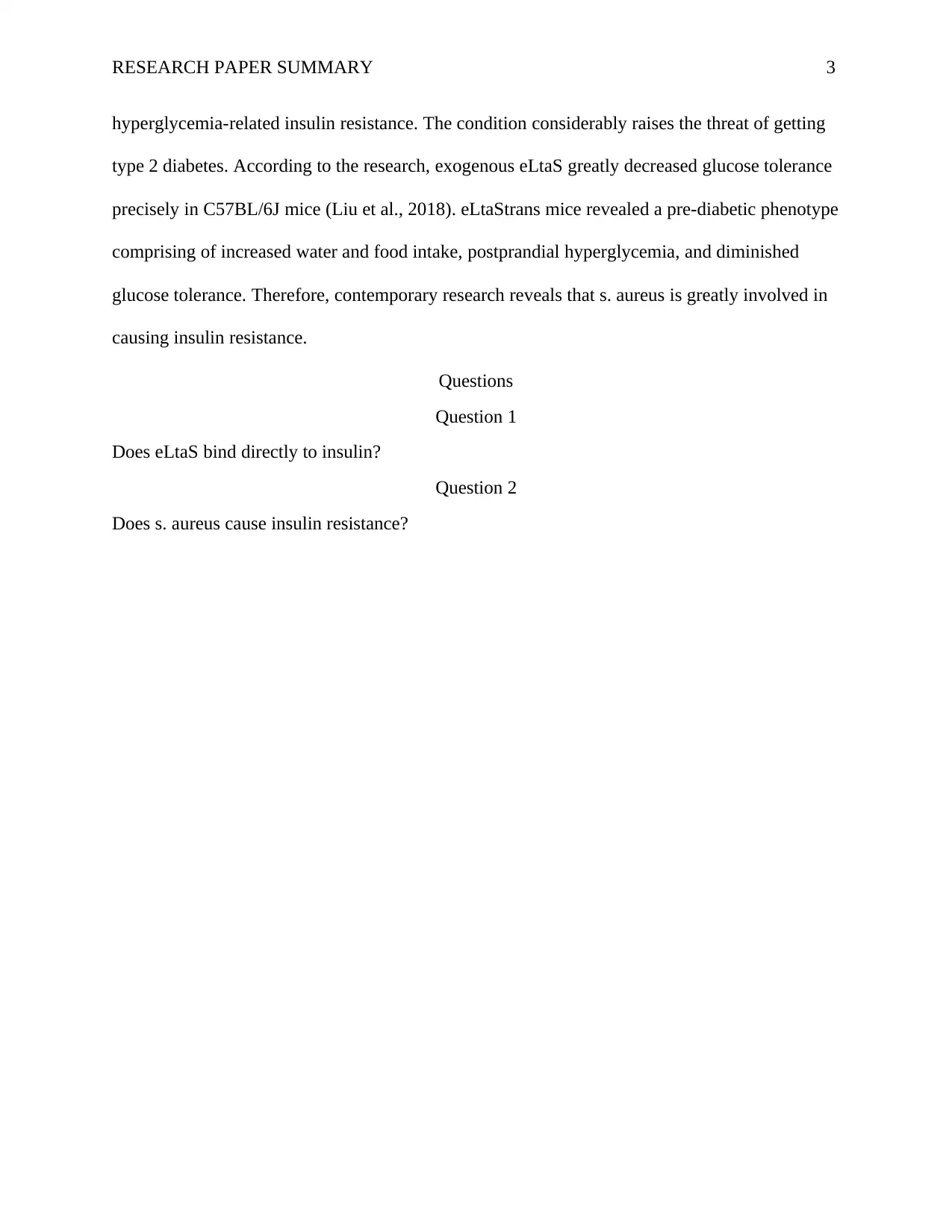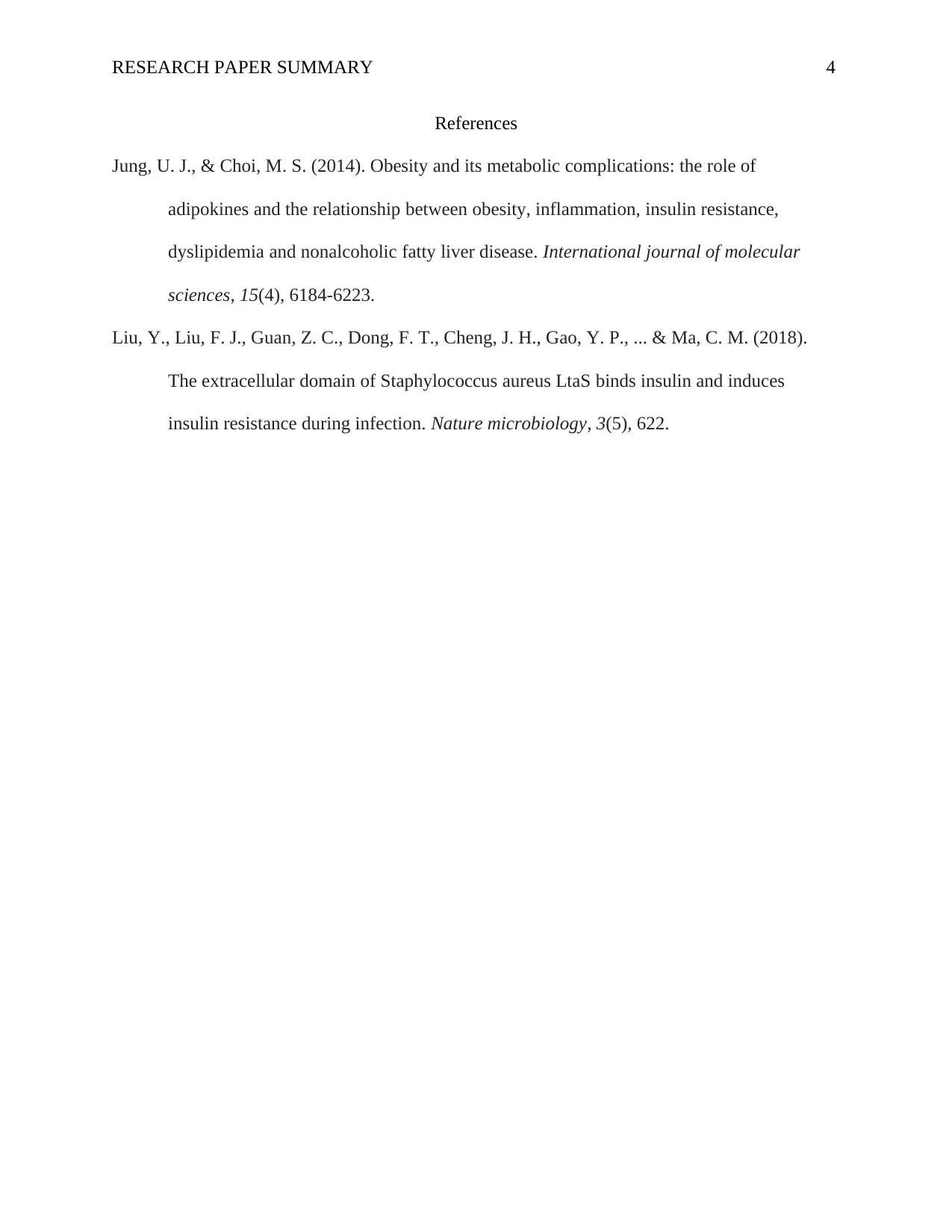Detailed Summary: The Role of S. Aureus in Inducing Insulin Resistance
VerifiedAdded on 2023/06/07
|4
|562
|375
Summary
AI Summary
This research paper summary explores the relationship between Staphylococcus aureus and insulin resistance. The study utilizes C57BL/6J mice and C2C12 cells to investigate how S. aureus infection impairs glucose tolerance through the production of eLtaS, an insulin-binding factor. The research indicates that S. aureus infection leads to the secretion of eLtaS, which inhibits glucose uptake and causes insulin resistance. The study also found that eLtaStransgenic mice exhibited pre-diabetic symptoms, including increased food and water intake, postprandial hyperglycemia, and diminished glucose tolerance. The research concludes that S. aureus plays a significant role in causing insulin resistance, highlighting the potential for therapeutic interventions targeting eLtaS to restore glucose tolerance.
1 out of 4





![[object Object]](/_next/static/media/star-bottom.7253800d.svg)